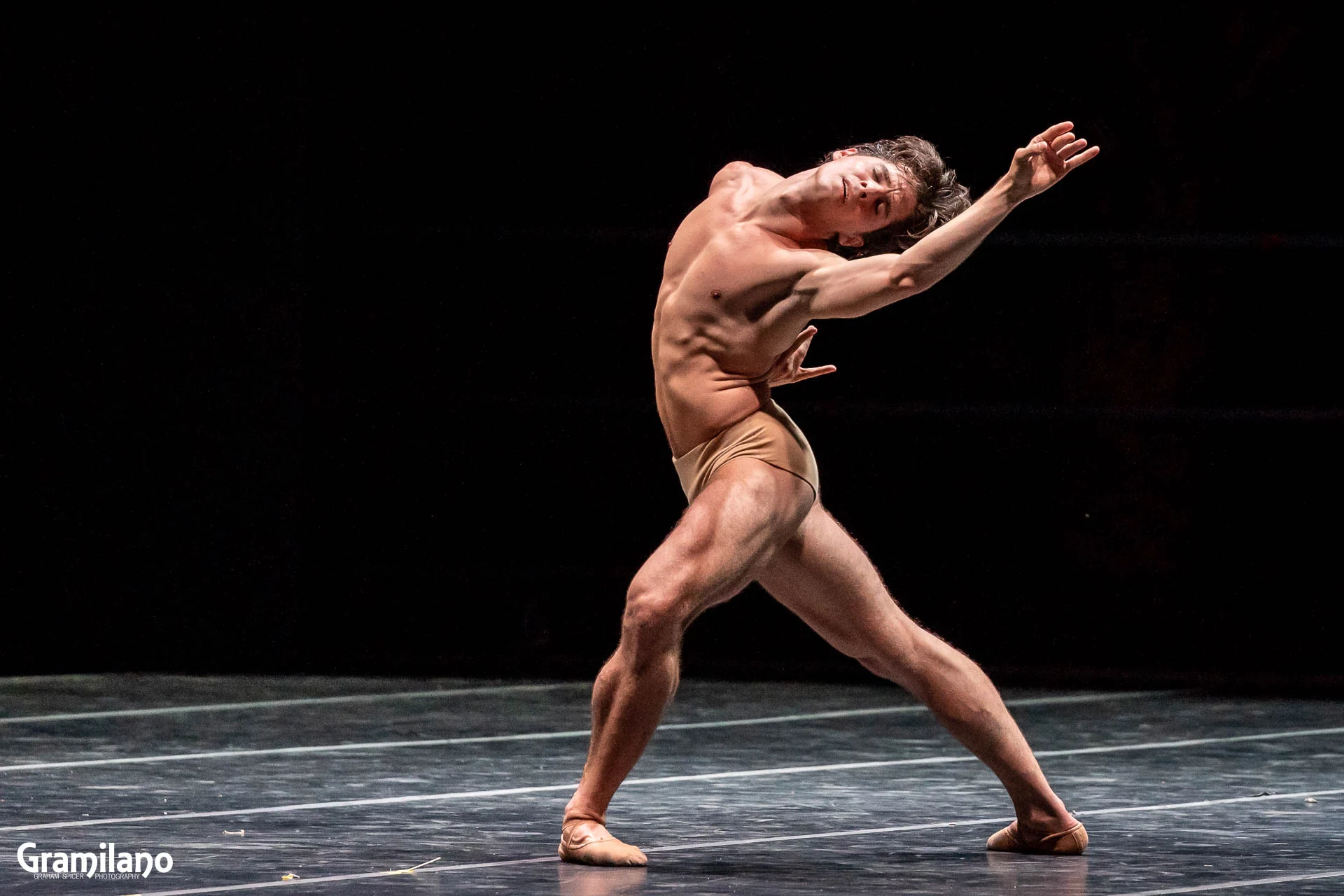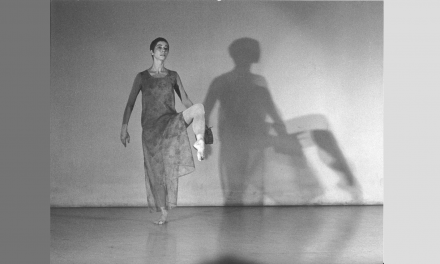When they take the stage at Segerstrom Center for the Arts on Saturday, November 9, the dancers and musicians of the Sergio Bernal Dance Company will bring all the energy and flamboyance of flamenco, then follow up with the company’s distinctive blend of Spain’s other traditional dance styles, seasoned with ballet and modern dance moves.
Without question, Spanish flamenco is recognized worldwide and Southern California has long embraced flamenco with a myriad of flamenco performances, festivals, and classes. Flamenco’s popularity often has eclipsed other Spanish dance genres well as overshadowed the country’s influence on ballet and modern dance.
Beyond flamenco are many Spanish dance styles, some recognized more as music than as types of dance. Maurice Ravel’s ubiquitous composition Bolero was named after a slow, deliberate Spanish dance, sometimes considered a courtship dance. The rhythmic fandango may be familiar as a type of spirited music. It is also Spanish dance that often involves improvisation. The paso doble, a Spanish dance emulating a bull fight, has evolved into a mainstay of ballroom dance and competitions like So You Think You Can Dance and Dancing With the Stars. Some other Spanish dances include escuela bolero with its intricate footwork dating back to 18th century Baroque court and traditional folk dance. Often mistaken for flamenco, sevillanas is a folk dance that, like flamenco, was born in the city of Seville.
Too often, Spain’s deep history as a source of brilliant ballet dancers also is overlooked. Two who emerged from Spain are American Ballet Theater principal Angel Corella who now is artistic director at Philadelphia Ballet and Tamara Rojo who starred with Britain’s Royal Ballet and now is artistic director at San Francisco Ballet. In the world of modern or contemporary ballet, Nacho Duato is another Spanish-born dancer who made his name as a choreographer and now is the artistic director of the Berlin State Ballet.
Co-artistic directors Sergio Bernal and Ricardo Cue bring A Night With Sergio Bernal, with a stated mission to share the virtuosity, versatility and variety of the different styles of Spanish dance and music.
Cue has worked with most of the dance world’s ballet greats and his impresario credits reflect he knows how to put on a show. In 2018, Cue and Bernal began collaborating, which led to forming the Sergio Bernal Dance Company with both men choreographing.
As a dancer, Bernal achieved principal dancer status in seemingly different worlds, flamenco and Spanish dance on the one hand, ballet on the other. After graduating from the prestigious Real Conservatorio de Danza de Madrid, Bernal worked with the flamenco legend Carlos Saura and became a principal dancer with National Ballet of Spain. His ballet prowess drew attention beyond Spain, making him a frequent guest artist at international galas with stars like Maya Plisétskaya, Tamara Rojo, and Marinella Nuñez. In 2020 Bernal was invited to perform the coveted title role in George Balanchine’s Apollo at the 70th anniversary of the English National Ballet. Cue’s reinterpretation of The Dying Swan as a male solo for Bernal was nominated for Best Classical Performance at the National Dance Awards in the United Kingdom. The company showcases Bernal’s ability to move almost seamlessly between the worlds of ballet and Spanish dance.
Of the ten works scheduled to be performed, Bernal choreographed six and Cue created two, including the highly praised solo for Bernal, The Swan. the program includes composer Manuel de Falla’s celebratory The Three Cornered Hat, choreographed by Antonio Ruiz Soler as a solo for Bernal. Among Bernal’s choreography is the finale set to Ravel’s Bolero.
Bernal is joined onstage by two other dancers Cristina Cazorla and Carlos Romero. The musicians include Daniel Jurado, Desire Paredes, and Javier Valdunciel.
Bernal spoke by phone with LA Dance Chronicle’s Ann Haskins about the history of his rise in two seemingly different dance worlds, his collaboration with Ricardo Cue, and the dancers joining him on stage for An Evening with Sergio Bernal.
LADC: Before we talk about the show you’re bringing, please talk about your dance background that spans ballet, flamenco and other Spanish dance. Which one did you start with? Or have you always done all of them at once?
Bernal: It began with flamenco. I was born in Madrid and my parents listened to flamenco music in my house. I grew up knowing the music and the movement of flamenco. I started with flamenco when I was four years old. And then, when I went to school, I discovered Spanish dance and how it was an absolutely different style than flamenco. Ballet was part of the conservatory, but I found ballet because of Ricardo Cue. He lived in classical ballet for 15 years. He worked with Rudolf Nureyev, Mikhail Baryshnikov, Fernando Bujones, the great dancers in that moment. Ricardo told me: “Sergio, you have to also dance ballet. Because when you dance ballet, you have to learn different movement, different style. When you speak English and also speak French and also speak Spanish, you are more rich. You can go around the world, and open doors. It’s the same in the dance. When you dance flamenco, okay, you have this, this throne of flamenco. But if you also dance ballet, it’s better, because you have another movement, you have another style, another emotion, another beauty, and it’s more rich for your dance.” That was the reason that I also learned more ballet. Then when I had the opportunity to dance Apollo by George Balanchine. I discovered another world because. Balanchine is so rich, to me, one of the best choreographers in the world. Ballet became part of our company, along with flamenco and Spanish dance which is very different from flamenco.
LADC: How are Spanish dance and flamenco different?
Bernal: Because flamenco is an individual style. When you dance flamenco, you have to be alone with yourself and with the musicians. When you dance Spanish dance, you are in the middle of a group. In Spanish dance you can be principal dancer or soloist or part of the corps. A Spanish dance is more than you alone; it is the group even though different Spanish dances have different styles. Flamenco does have similar technique to ballet. In flamenco, you also have to do pirouettes. You also have to do jumps.You also have to do a tour en lair. In both, you have to have lines, beautiful lines. Both dances you have to have the arms, with the legs, and you have to know the valid technique.
LADC: Why do you think people know little about Spanish dance beyond flamenco?
Bernal: Because It is easier to have a full length show about flamenco. One dancer can do a flamenco show alone with three or four musicians, or even two musicians. Spanish dance is rich because you have to have beautiful costumes. You have to have beautiful music, sometimes with an orchestra to show the music of Manuel de Falla, Joaquín Turina, Pablo Sarasate, and Isaac Albéniz. I think that is the reason Spanish dances is not very famous right now, but I think it is richer than flamenco. You have escuela bolero is a beautiful style, that is very close to the Danish choreographer August Bounonville ballets. Also, folklore dance differs in different parts of Spain. For these reasons, we will do a great show, a great performance to show all about the Spanish dance. Spanish dance is so rich, so rich, because you have to put on many styles.
LADC: Tell me about the other dancers.
Bernal: Cristina Cazorla, Carlos Romero, and I, all three of us began at the Real Conservatorio de Danza de Madrid. We all studied a bolero, folk dance, stylized dance, flamenco and also classical ballet and some contemporary dance.
Carlos Romero was born in Barcelona in Catalonia in the north of Spain. He also started his career in Madrid. Carlos was a principal dancer in the National Ballet of Spain for about five years. Carlos is a great dancer with beautiful lines and beautiful technique in ballet, in flamenco, and in Spanish dance. Everything.
Cristina Carzorla was born in Madrid and after the conservatory, has been known for the bolero school of Spanish dance. She started her career with Spanish dance companies then formed her own Cristina Carzorla Company.
We all dance true Spanish dance. We also all dance Spanish dance that is a little bit modern. I think we also have three different styles, because Carlos is more Spanish dance, Christina is more modern dance, and I am more flamenco and classical ballet.
The show includes all of those different things like Racheo that I dance with Carlos. Also, The Last Encounter that I dance with Christina was choreographed by the co-artistic director of the company, Ricardo Cue. Originally, he did it for the Bolshoi Ballet. We finish the show with Ravel’s Bolero, because it is a little bit modern Bolero. It’s like a curtain call.
LADC: Ballet is very much about trying to get off the ground and into the air, while flamenco is much more into the ground. Have you found things in one that you use in the other?
Bernal: Yes, definitely. When you dance ballet, you have to find the lines, you have to find the beauty, you have to find the technique. But also when you dance some role, like Sleeping Beauty, like Giselle, when you dance these, you have to find your emotions inside you. When you watch Natalia Osipova in Giselle, you can share her emotions. This also is the most important thing for me in the flamenco. In the flamenco, you have to put on the stage everything about your experience in your life, that you are sad, you are scared, your insecurity, your magic. Ballet and flamenco, all dance is about magic. The difference I think is the flamenco dancer finds more inside. In ballet, you have to find something beyond the technique. Whatever the dance, the stage is a black box, and you have to build a beautiful world for the audience. You have to create another world in this on the stage. This is the magic of Spanish dance, flamenco, and also ballet.
Sergio Bernal Dance Company in A Night With Sergio Bernal at Segerstrom Center for the Arts, 600 Town Center Dr., Costa Mesa; Sat., Nov. 9, 7:30 pm, $44.07-$134.47. https://www.scfta.org/
Featured photo: Sergio Bernal. Photo courtesy of the artist.














